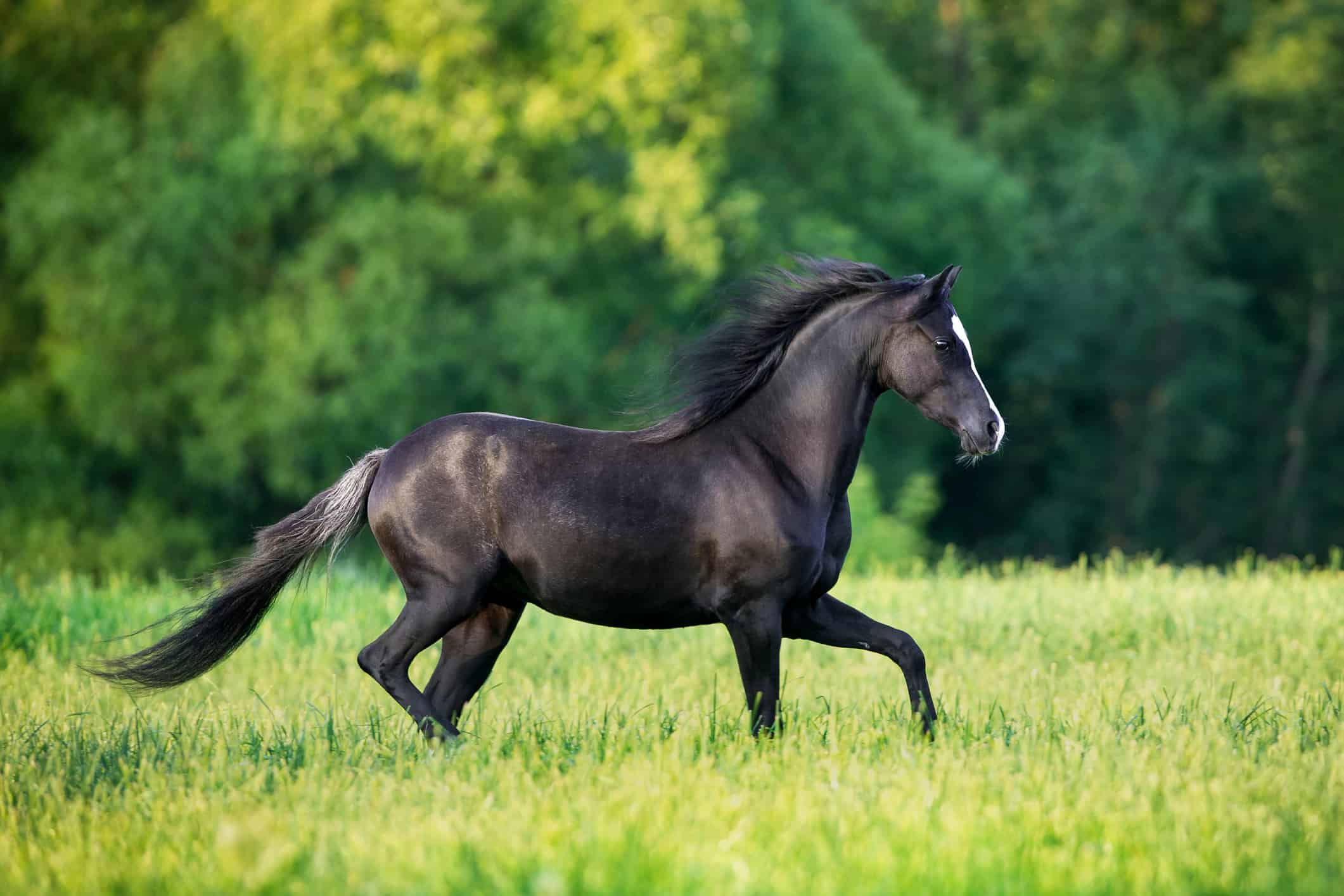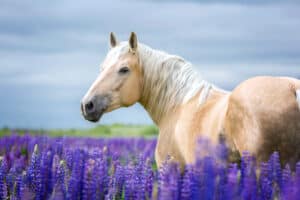Similar to the Shetland, the Welsh Pony and Cob is not a breed of horse. It’s a pony! This means that the average height across the equines of this breed doesn’t exceed 14.2 hands high. There is one exception to this rule, but you’ll have to read on to find out! There’s so much to discover about this hardy and intelligent pony breed, so let’s get right into it.
Origin of the Welsh Pony and Cob

Wild Welsh Ponies still roam on Hay Bluff in the Brecon Beacons of Wales.
©Isla Hampson/iStock via Getty Images
This ancient breed originates from Wales in the United Kingdom, residing there even before the Romans. The environment was barren and winters were harsh, so only the hardiest stock survived. The soundness of the Welsh Pony and Cob is a defining characteristic of the breed along with their intelligence.
This is what made them so well-loved for many different uses back in the day. They had jobs such as chariot pulling, coal mining, ranching, and delivering the post. The Welsh Pony’s endurance and trainability also make them popular in a variety of disciplines today. You can find them in the hunter, pleasure, or dressage ring as well as driving or eventing.
But they weren’t always in the United States. It wasn’t until the 1880s that an Illinois man took a special interest in the pony, enough to import some to the states. The Welsh Pony and Cob continue to be a beloved breed in both the UK and the US today.
What’s the Difference Between a Welsh Pony and a Welsh Cob?

The biggest difference between the types (besides height) is that Welsh Cobs have feathering on their hooves.
©Beauty and the Bovine Photography/iStock via Getty Images
By now you might be curious why this breed is called the Welsh Pony and Cob. Here’s why.
Welsh Pony Sections
Welsh are grouped into four Welsh Pony and Cob types recognized by the United States registry, each with unique features.
| Section | Height | Characteristics |
|---|---|---|
| A | <12.2 hands high | Welsh Mountain Pony, strong and sturdy conformation with stamina, endurance, and soundness |
| B | <14.2 hands high | Welsh Pony, similar to the Welsh Mountain Pony in all but height |
| C | <13.2 hands high | Welsh Cob type, more powerful and sturdy than the pony types |
| D | >13.2 hands high | Welsh Cob, a substantial body with a moderate amount of feathering over their hooves |
Welsh Pony and Cob Height
The height of a Welsh Pony will depend on whether they are Section A, B, C, or D or are crossed with another breed. However, equines of this breed can range in height between 11 hands high (for the Ponies) to over 16 hands high (for the Cobs).
What’s it Like to Own a Welsh Pony or Cob?
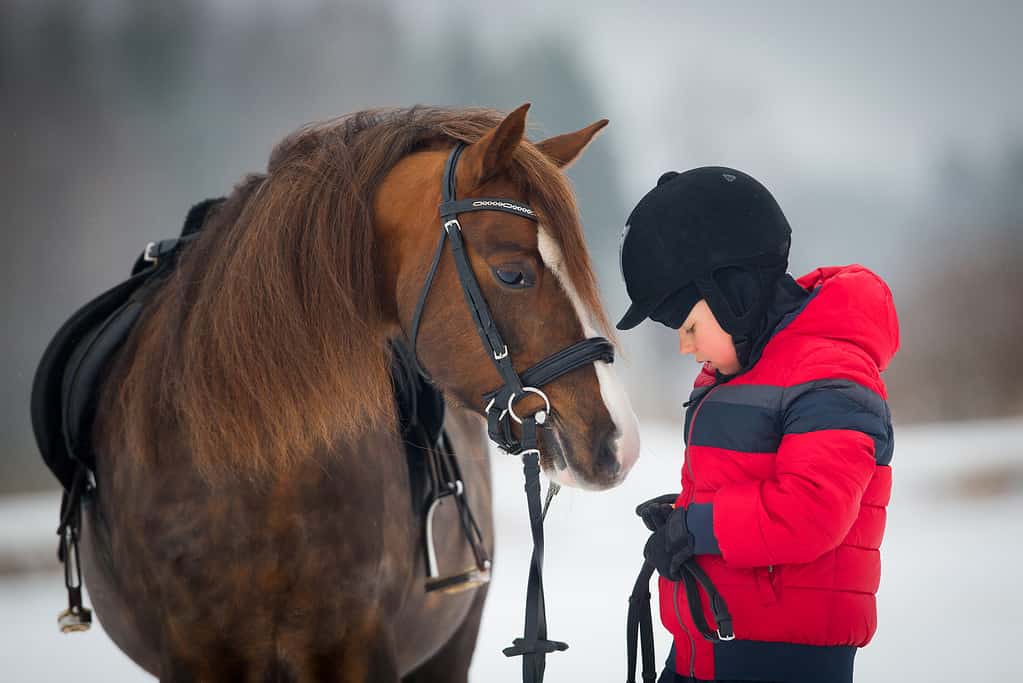
Children are a pony’s best friend!
©Alexia_Khrushcheva/iStock via Getty Images
If you’ve ever had the pleasure of riding a Welsh, you might wonder what it’s like to own one for yourself! Let’s go over the cost breakdown as well as the physical and personality traits you can expect for the breed.
Purchase Price
The price of a Welsh Pony and Cob depends on a few factors such as:
- Where you live
- Sex
- Age
- Breed section (A, B, C, or D)
- Registered or crossbred
- Pedigree/bloodline
- Level of training
The average sale price of a Welsh is anywhere from $2,000 to over $35,000. The more seasoned or purebred equines cost more, while Welsh crosses often go for a lot less.
Cost of Ownership
Beyond the purchase price, there are even more factors to consider when buying a Welsh Pony and Cob including:
- Boarding
- Feed (2% of their body weight)
- Training
- Vet and farrier care
- Equipment and supplies
- Show fees (including transportation costs)
It’s impossible to say how much it will cost to own this pony breed. But the minimum you can expect to pay per year is around $1,000.
Characteristics
Welsh Pony and Cobs can be any solid color, so you don’t see them with tobiano or leopard spotting patterning. The most common colors of a Welsh are black, grey, chestnut, and bay.
The biggest difference between the Welsh Pony and the Cob types is their stature. The ponies are smaller and more refined while the Cobs are substantial yet compact. Cobs also have feathering on their hooves similar to certain draft horses.
But if they’re the same breed then there has to be something similar about them, right? Yes, and it’s their temperament.
Temperament
It’s not often you get a perfect balance of personalities. But with the Welsh, you do.
They are bold, intelligent, and willing yet friendly and good-natured. This combination comes from their lineage as hardy stock roaming the mountainous region of Wales coupled with their use by the locals for a variety of jobs. Over time, only the fearless, strong, and trainable genes were passed on, resulting in the incredible breed we know and love today.
What to Feed a Welsh Pony
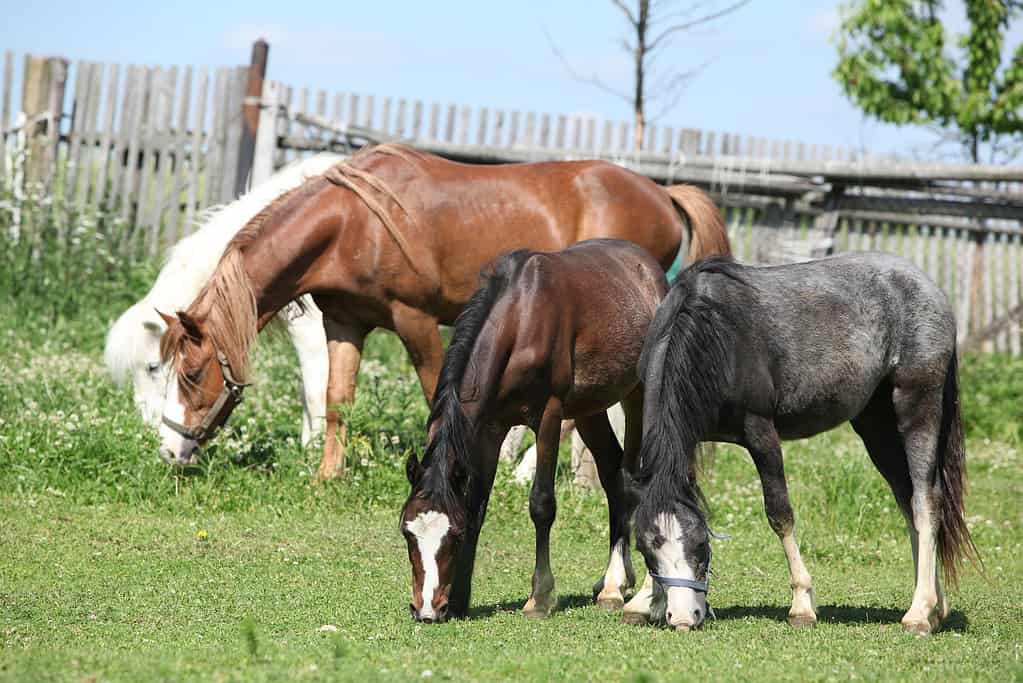
This breed does well turned out in a pasture to graze freely.
©Zuzule/iStock via Getty Images
Wild Welsh Ponies grew up in a remote environment, forced to be tough to survive. Domesticated stock isn’t like that.
Because they are small animals with access to high-quality forage like alfalfa and grain, Welsh Ponies and Cobs are prone to being overweight (like any pony breed). This breed does well out in the pasture as long as you limit their access to lush grasses. If they are stalled then it’s a good idea to not feed them excess grain if you want to prevent laminitis.
Welsh in good health can live to be up to 35 years old, so be prepared for the commitment before you decide.
Is a Welsh Pony and Cob Right For You?
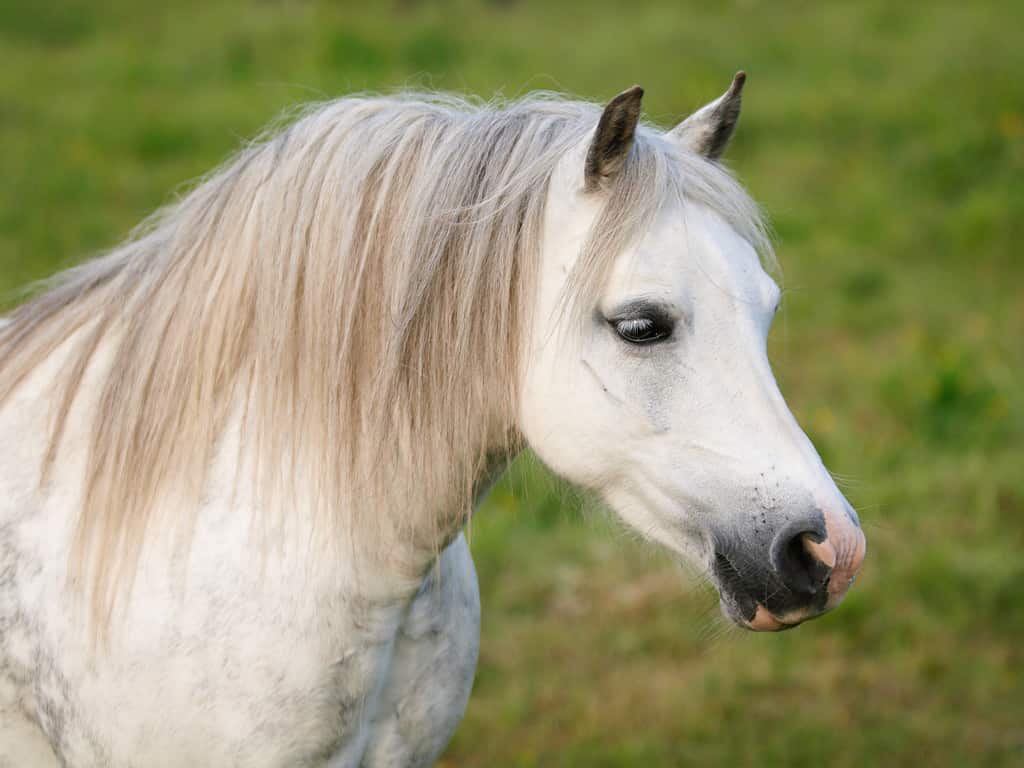
The Welsh Pony comes in many colors, including dapple grey.
©nigelb10/iStock via Getty Images
If you want a safe children’s pony, a capable mount for a junior rider, or a sturdy ride for an adult, the Welsh Pony and Cob is for you! Plus, they can drive you around in a cart even if you get too tall to ride them.
There are so many wonderful traits about the Welsh. Now the only thing left to do is find the perfect pony for you!
Thank you for reading! Have some feedback for us? Contact the AZ Animals editorial team.

